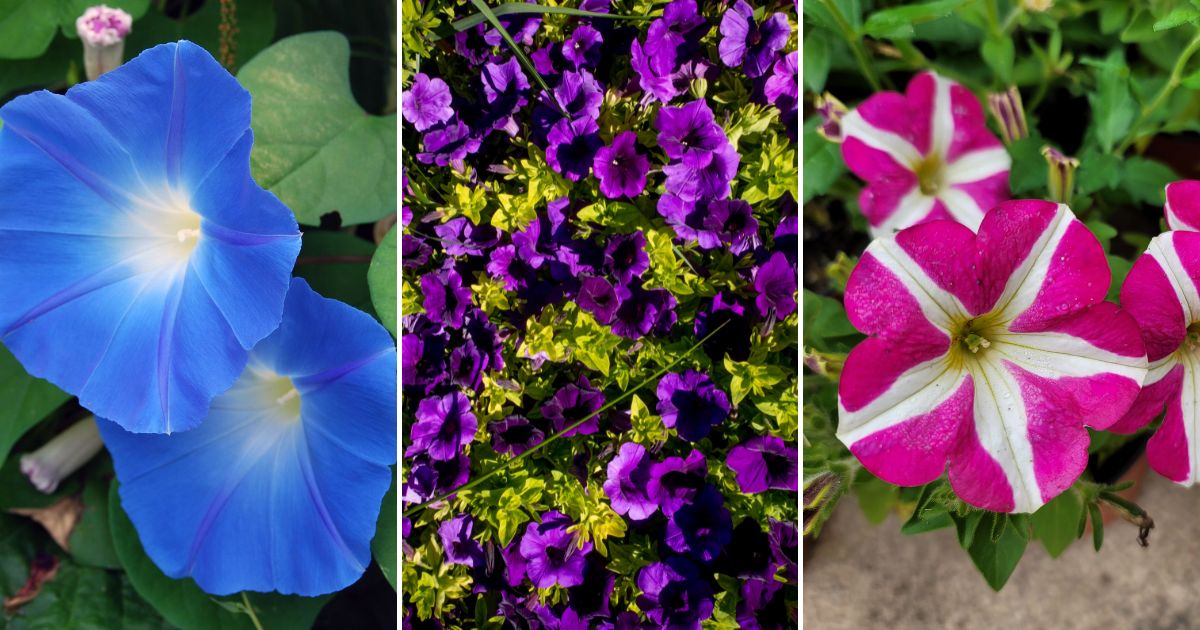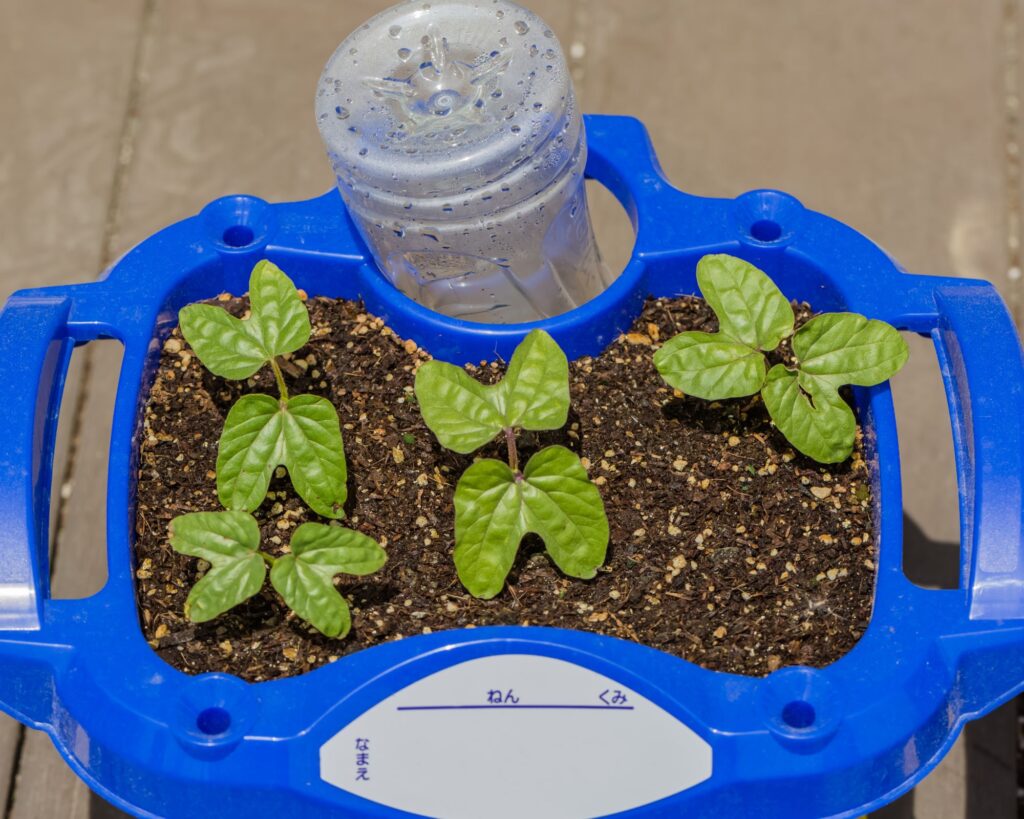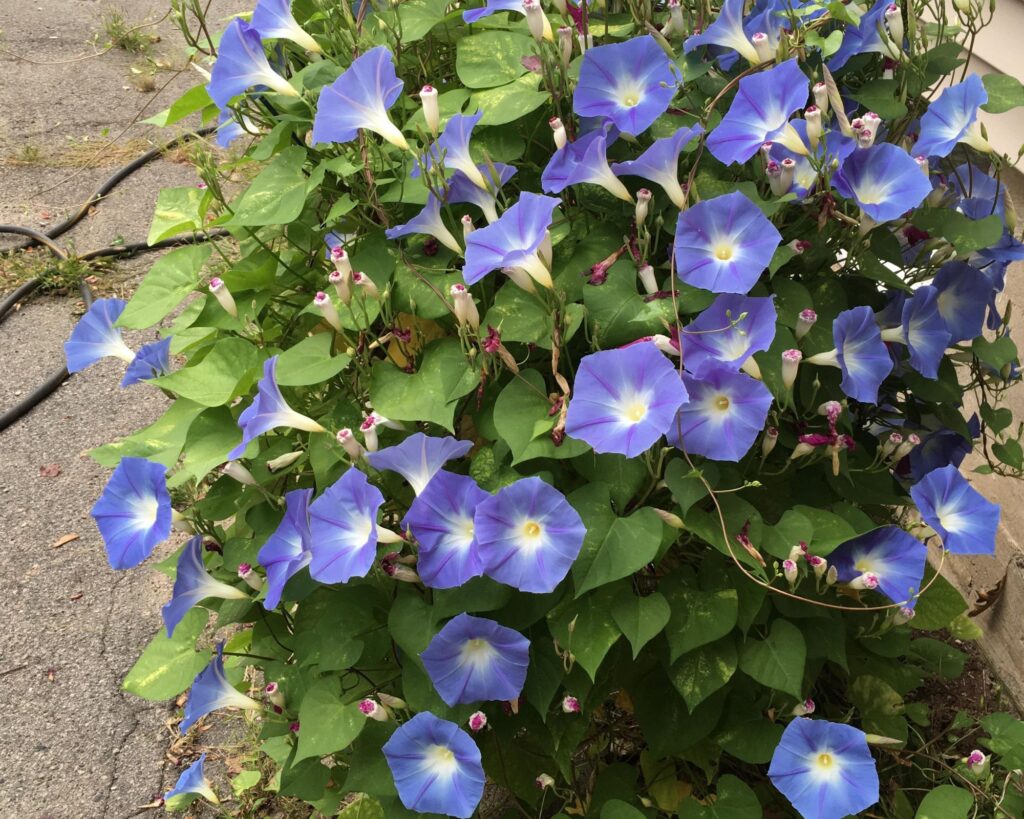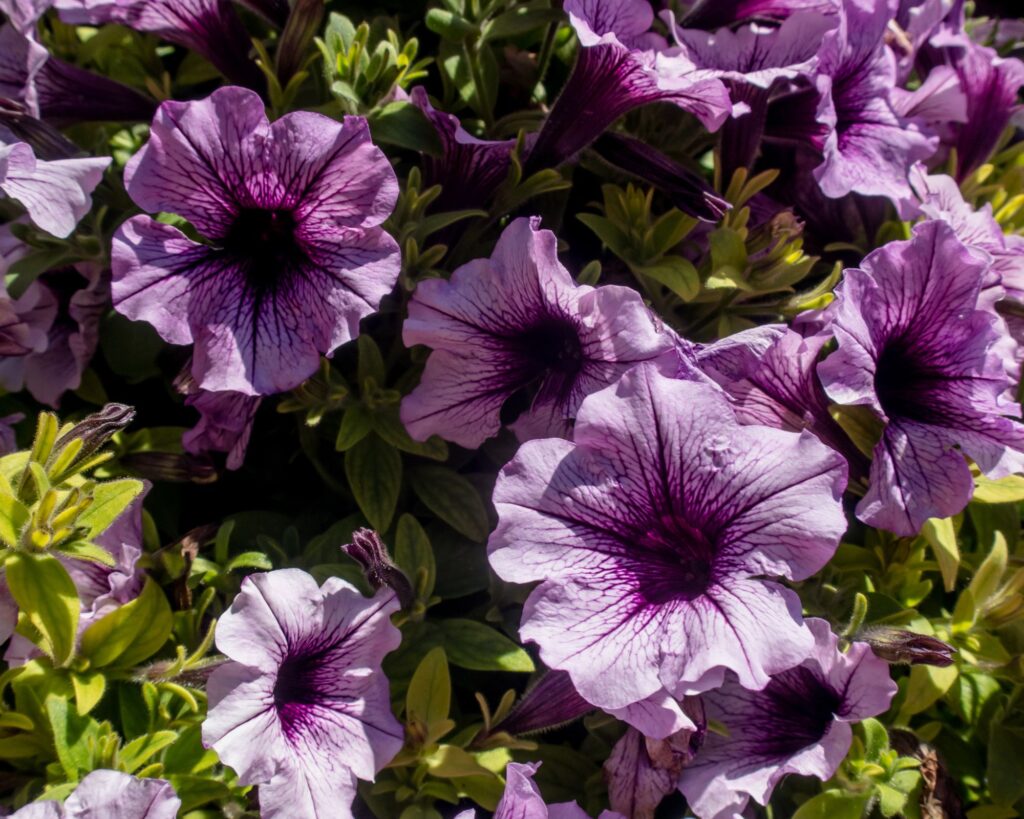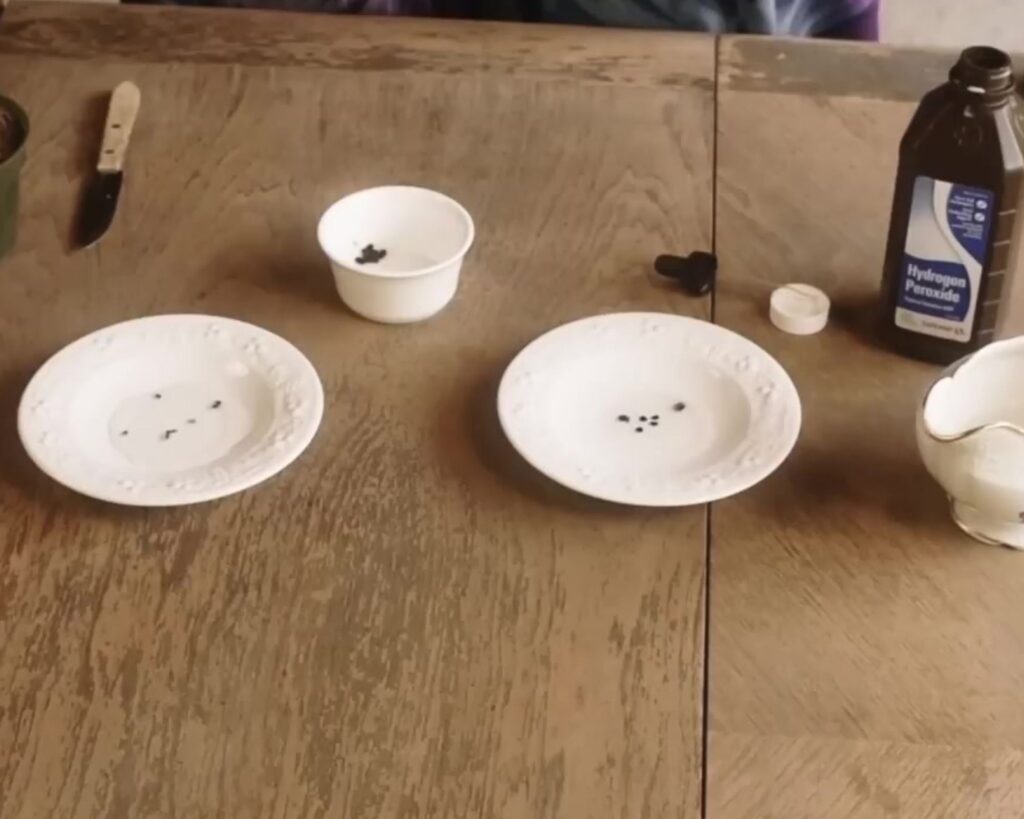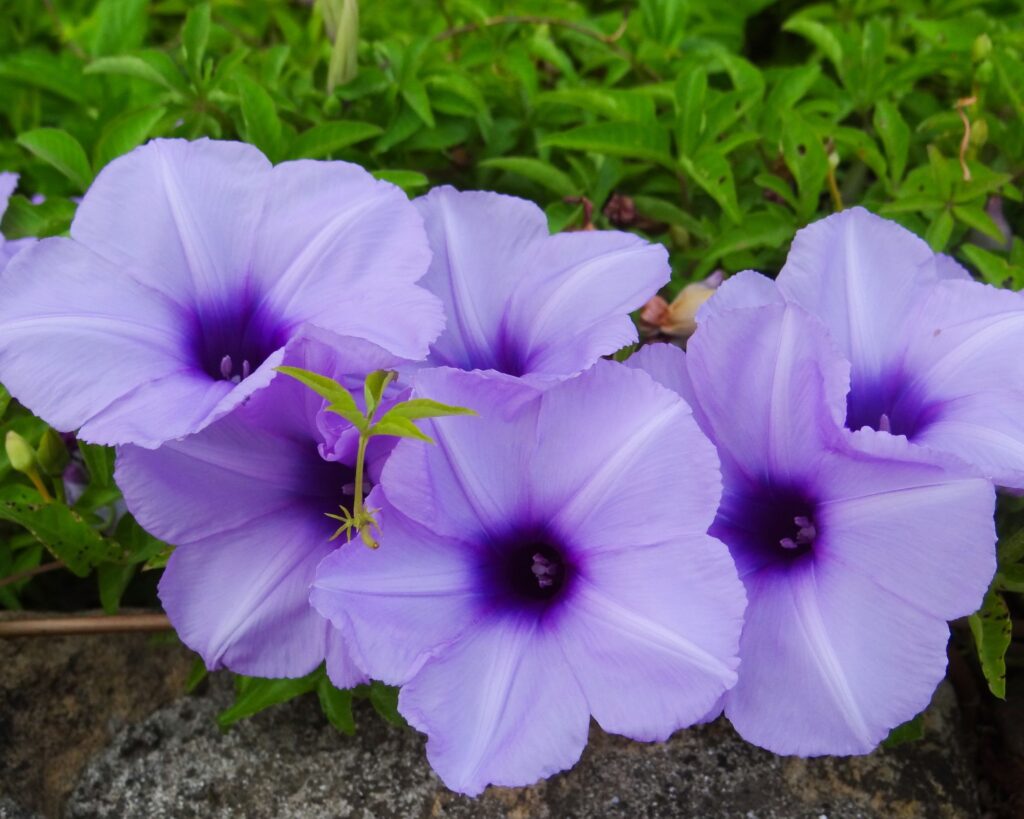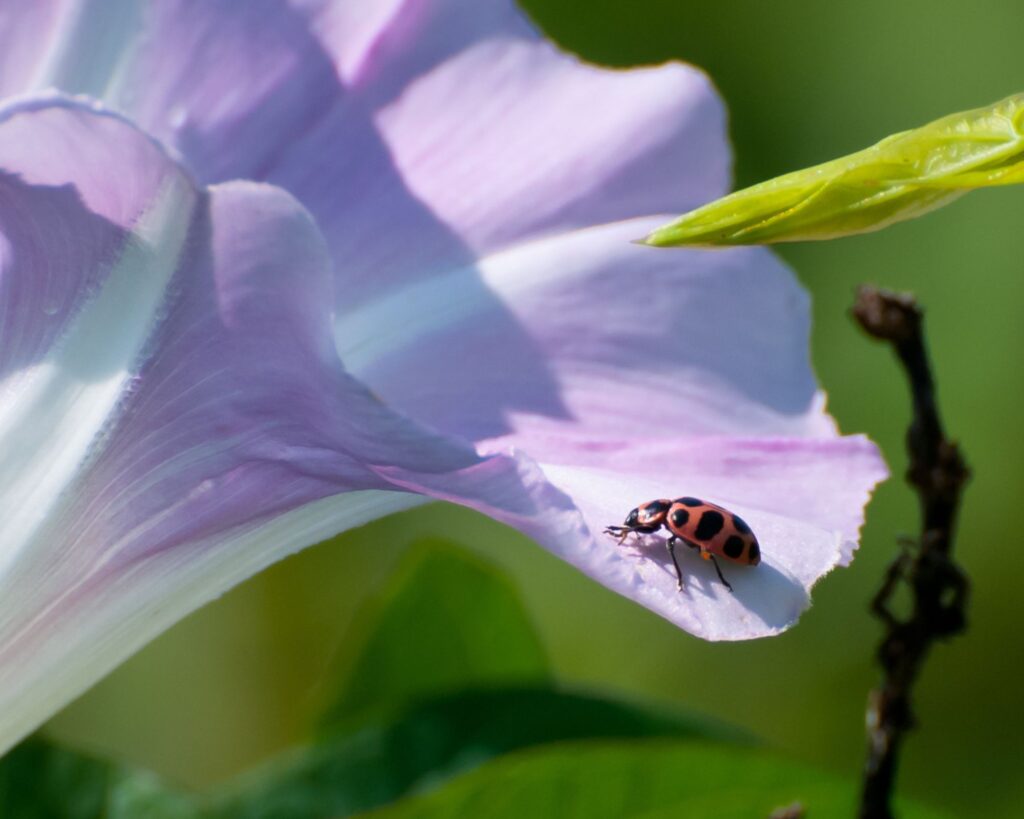Have you ever wished your garden could greet you with a burst of color each morning? Morning glories can turn that wish into reality with their vibrant hues and charming blossoms that unfurl with the first light of day.
Perfect for both novice and seasoned gardeners, these low-maintenance flowers can transform your outdoor space into a picturesque haven.
Starting your journey to a stunning morning glory display is simple: plant the seeds in the spring, just before the last frost, after soaking them overnight to jumpstart germination. Soon, you’ll see them climbing trellises and fences, creating a lush, living tapestry.
Keep the soil moderately moist, and with the right care, you’ll enjoy a spectacular floral display that brings a touch of magic to your mornings. Dive into the world of morning glories and let your garden bloom with life and color.
Understanding Different Species
Morning glories come in various species with distinct colors and blooms. Choosing the right variety will depend on your preferences for flower size, color, and growth habit.
Morning glories belong to the genus Ipomoea, and several species are popular among gardeners. Ipomoea purpurea is one of the most well-known with its vibrant, trumpet-shaped flowers.
Ipomoea tricolor offers larger blooms, often in striking shades of blue and purple.
For those seeking unique foliage, Ipomoea nil has variegated leaves and a range of flower colors.
Each species varies in growth rate, with some being more vigorous climbers than others:
- Ipomoea purpurea: Common variety, grows quickly, various colors.
- Ipomoea tricolor: Larger blooms, often in blue or purple.
- Ipomoea nil: Unique variegated leaves, diverse colors.
Choosing Colors and Blooms
The color and size of the blooms are vital in deciding which morning glory to plant. Some varieties offer vibrant blues, deep purples, or crisp whites. Selecting by color can enhance the aesthetics of your garden, complementing other plants.
Heavenly Blue is a favorite with its sky-blue petals. If you prefer multi-colored blooms, ‘Carnival of Venice’ features stripes of red and white.
Color and Bloom Options:
- Heavenly Blue: Classic, sky-blue flowers
- Scarlett O’Hara: Bright red blooms with a striking appearance
- Pearly Gates: Pure white flowers, perfect for a clean look
- Carnival of Venice: Red and white striped petals
Soil Requirements
Choosing the right soil and ensuring optimal sunlight and space are crucial for growing healthy morning glories.
Morning glories thrive in well-draining soil with a pH between 6.0 and 7.5. You can improve drainage by adding compost or sand if your soil is heavy clay. A mix that contains organic material will provide the necessary nutrients for vigorous growth.
Consider performing a soil test to identify any deficiencies or imbalances. Avoid highly acidic soils. Morning glories prefer soil that retains some moisture but is not waterlogged.
Mulch around the base of the plants to help retain moisture and reduce the growth of weeds.
Sunlight and Space Considerations
Morning glories need full sun, at least 6-8 hours of direct sunlight daily. Ensure your planting site isn’t shaded by trees or buildings. Without ample sunlight, the flowers may not bloom as abundantly.
When planting, space your seeds or seedlings about 6-12 inches apart to allow enough room for growth. They can grow vines up to 15 feet, so a sturdy support like a trellis, fence, or even a mailbox is beneficial.
This space and support help prevent crowding and ensure healthy development.
Timing for Planting
Sowing morning glory seeds effectively ensures a healthy growth. You need to know the right time to plant and some practical germination techniques.
The best time to plant morning glory seeds is after the last frost has passed. This typically means late spring when the soil temperature is around 64-77°F (18-25°C).
Ensure your planting area gets plenty of sunlight, as morning glories thrive in full sun.
Avoid planting too late in the season, as cooler temperatures can hinder growth. This means planning your sowing schedule properly to make the most of the growing season.
Morning glories can be directly sown into the garden ground if the climate conditions are suitable, or you can start them indoors about 4-6 weeks before the last frost.
Germination Tips
To boost the germination rate, nick the seeds slightly with a knife or sandpaper. This helps water penetrate the seed coat.
Soak the seeds in warm water for about 24 hours before planting. This facilitates quicker sprouting.
Plant the seeds about half an inch deep in well-draining soil. Keep the soil consistently moist but avoid waterlogging. Spacing: Place seeds about 6-12 inches apart to ensure room for growth.
Maintain temperatures of at least 64°F (18°C) for successful germination, which usually takes 5-21 days.
Add a trellis or other support structure early on, as morning glories are climbing vines that require support.
Watering and Fertilizing for Optimal Growth
Water morning glories deeply, providing about 1 inch of water per week. This maintains consistent soil moisture without overwatering. Use a soaker hose or drip system to target the roots directly, reducing leaf diseases.
Morning glories prefer moist but not soggy soil. Ensure good drainage to prevent root rot. In hot climates, mulching around the base helps retain moisture and keep roots cool.
Adjust watering frequency during dry spells or heavy rains. Morning glories appreciate morning watering, allowing leaves to dry and reducing fungal issues.
Morning glories generally do well with minimal fertilization. Apply a balanced, all-purpose fertilizer sparingly, about once a month during the growing season. Over-fertilizing can lead to more foliage at the expense of blooms.
A 10-10-10 fertilizer works well. For organic options, consider compost or a slow-release granulated feed. Monitor your plants; if they appear pale or growth is slow, a boost of nutrients might be necessary. Avoid high-nitrogen fertilizers, as they can hamper flowering.
Pruning and Training Vines
Prune morning glories to promote healthy growth and abundant flowers. Remove dead or damaged stems regularly. This encourages new growth and prevents overcrowding.
Training the vines is essential for a neat appearance. Use a trellis, fence, or arbor to guide growth. Gently tie or wrap the stems around supports.
In confined spaces, pinch back the tips to control spread. Regular pruning keeps the vines under control and enhances blooming. Inspect for pests and diseases while pruning.
Pest and Disease Management
Morning glories can attract pests such as aphids, spider mites, and caterpillars. Regularly inspect your plants and manually remove any pests you find.
You can also spray the plants with a mixture of water and mild soap to control aphids and spider mites.
For a more natural approach, introduce beneficial insects like ladybugs and lacewings. These natural predators can help keep pest populations under control. Keep the area around your morning glories clean and free of debris, which can harbor pests.
Morning glories may suffer from diseases like leaf spot, powdery mildew, and root rot. To prevent these, ensure your plants have good air circulation by spacing them appropriately.
Water the plants at the base to keep the foliage dry and reduce the risk of fungal diseases. If you notice any signs of disease, promptly remove affected leaves or plants to prevent the spread.
Applying a fungicide can help manage severe cases. It’s essential to practice crop rotation and avoid planting morning glories in the same spot each year to reduce disease recurrence.
